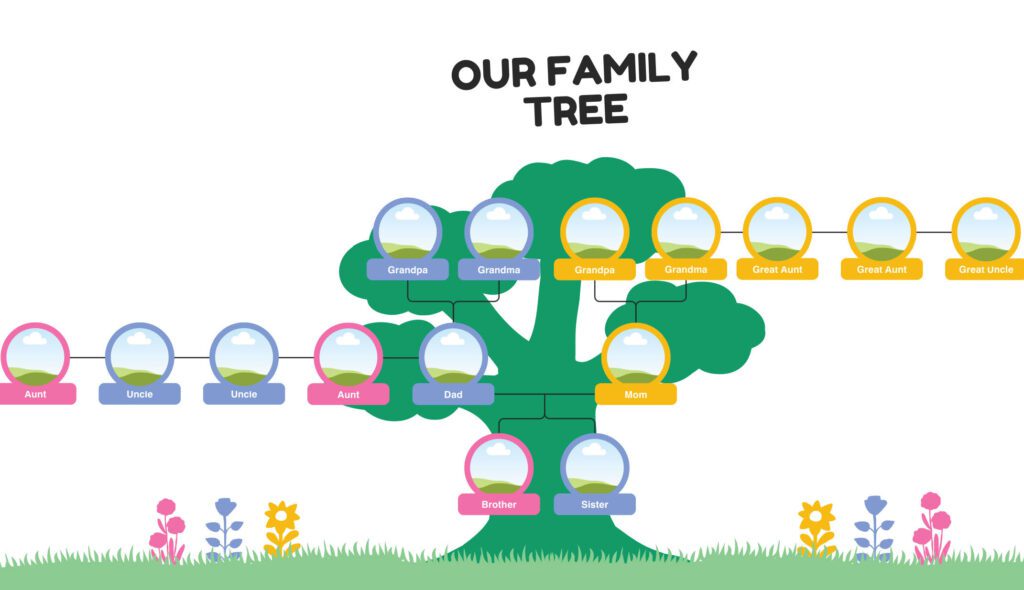Understanding relationships can be a perplexing journey for young children. Let’s lend them a hand, or maybe a leaf.
By Dawn Kocina
Navigating the intricacies of family relationships can be a bit like solving a puzzle for children. I distinctly recall my own son’s confusion, insisting, “She can’t be your mom, she’s my grandma!” How can we help them draw these connections? Perhaps through literal drawing — creating a family tree.
While younger kids may not be able to read just yet, a visual representation with photos can help illustrate these seemingly complex connections. Older children can showcase their computer skills by crafting an extended family tree through design programs like Canva — we suggest the whiteboard function to allow for expansion as needed.
Family Tree Fun
To get started, select your material. Some options include a roll of paper, canvas, a blank tablecloth with fabric markers, scrapbook pages, or computer-based design programs. Before illustrating your tree — which could be a literal tree or a chart of sorts — we recommend creating a list of family members to include and their connections to one another. Now comes the fun, let your artistic abilities shine as you build your family tree. Let the kids join in as much as they’re able. For elementary-age children, this
is a good time to practice letter formation.
Don’t forget to have fun! This project allows
for so much creativity and personalization. This is also a great opportunity to share fond memories with the kids or an aging relative.
The Who’s Who
As our loved ones age, it’s not uncommon for names and faces to escape their memory. Oftentimes this requires reintroduction to relatives, especially young grandchildren or great-grandchildren who are still learning the intricacies of relationships. A comprehensive family tree may help to alleviate some of this confusion. Including photos, names, relationships, and birthdates can provide invaluable clarity.

